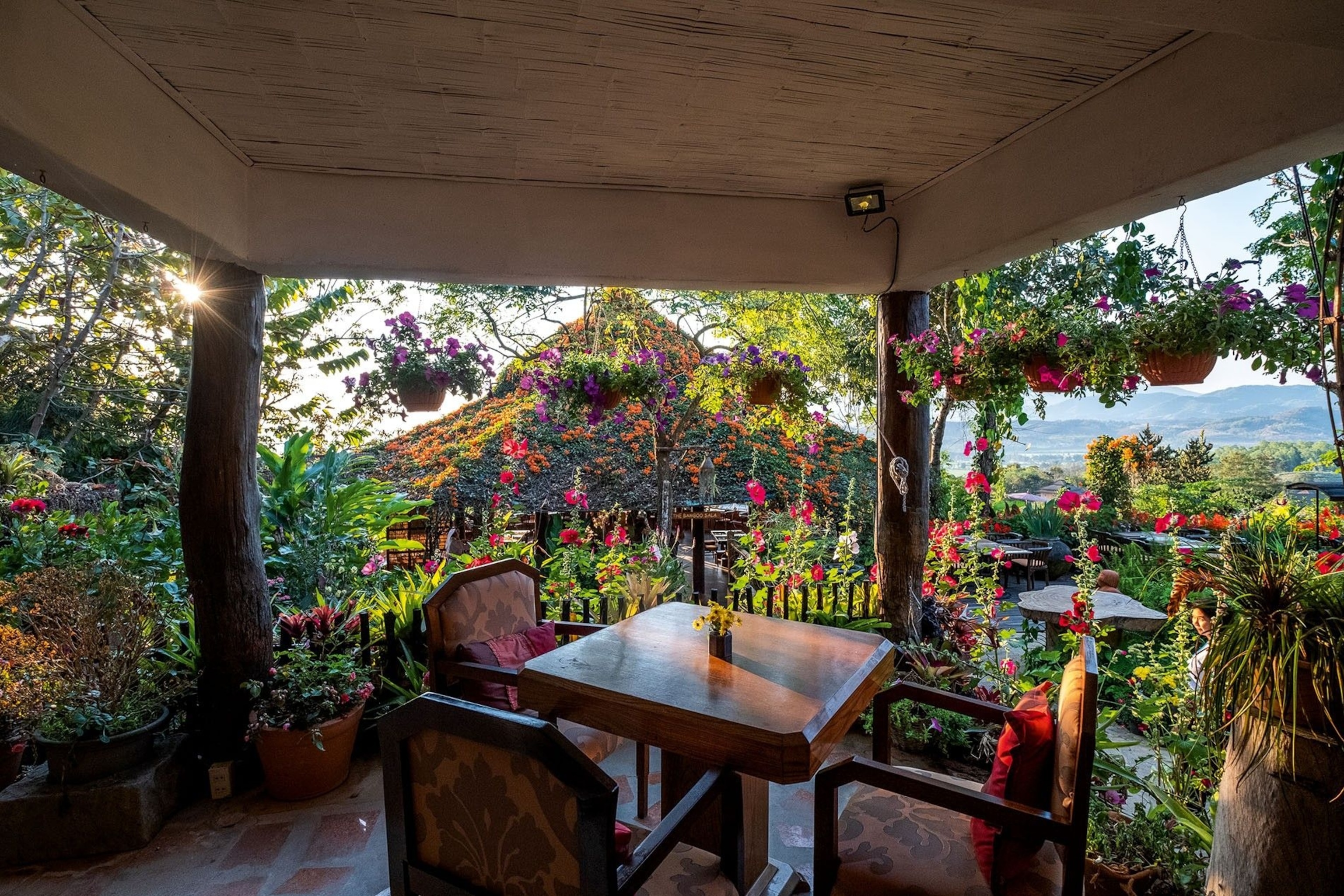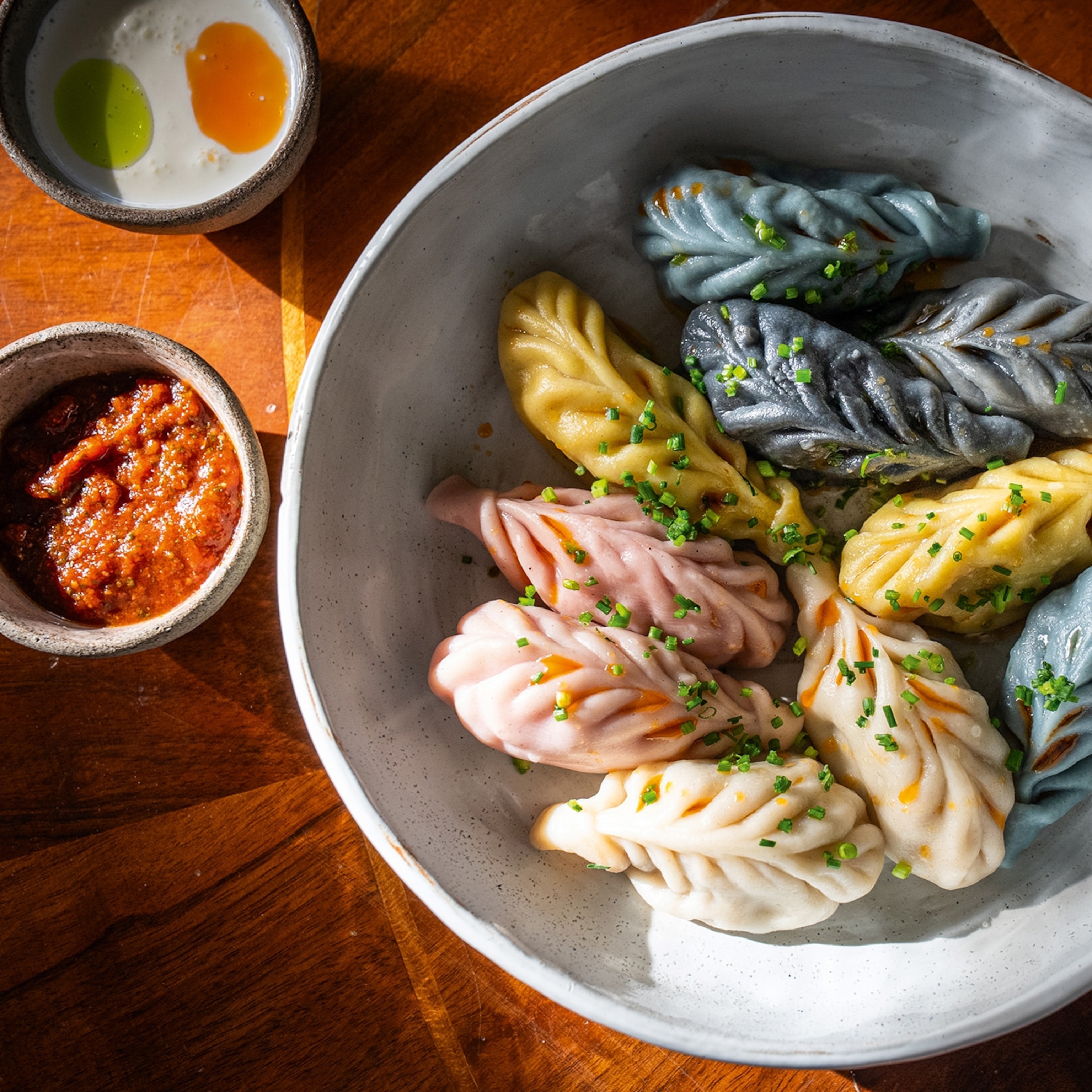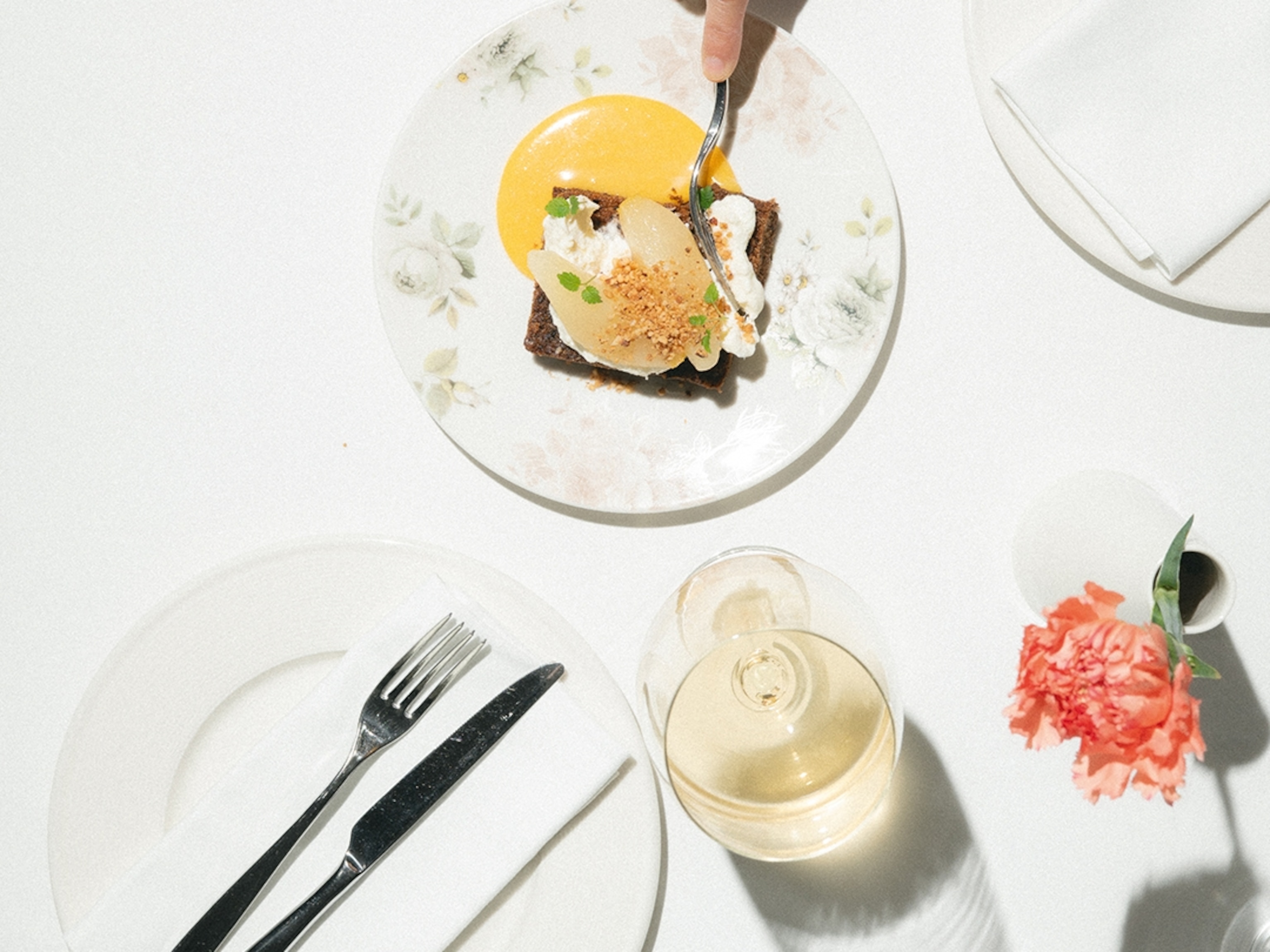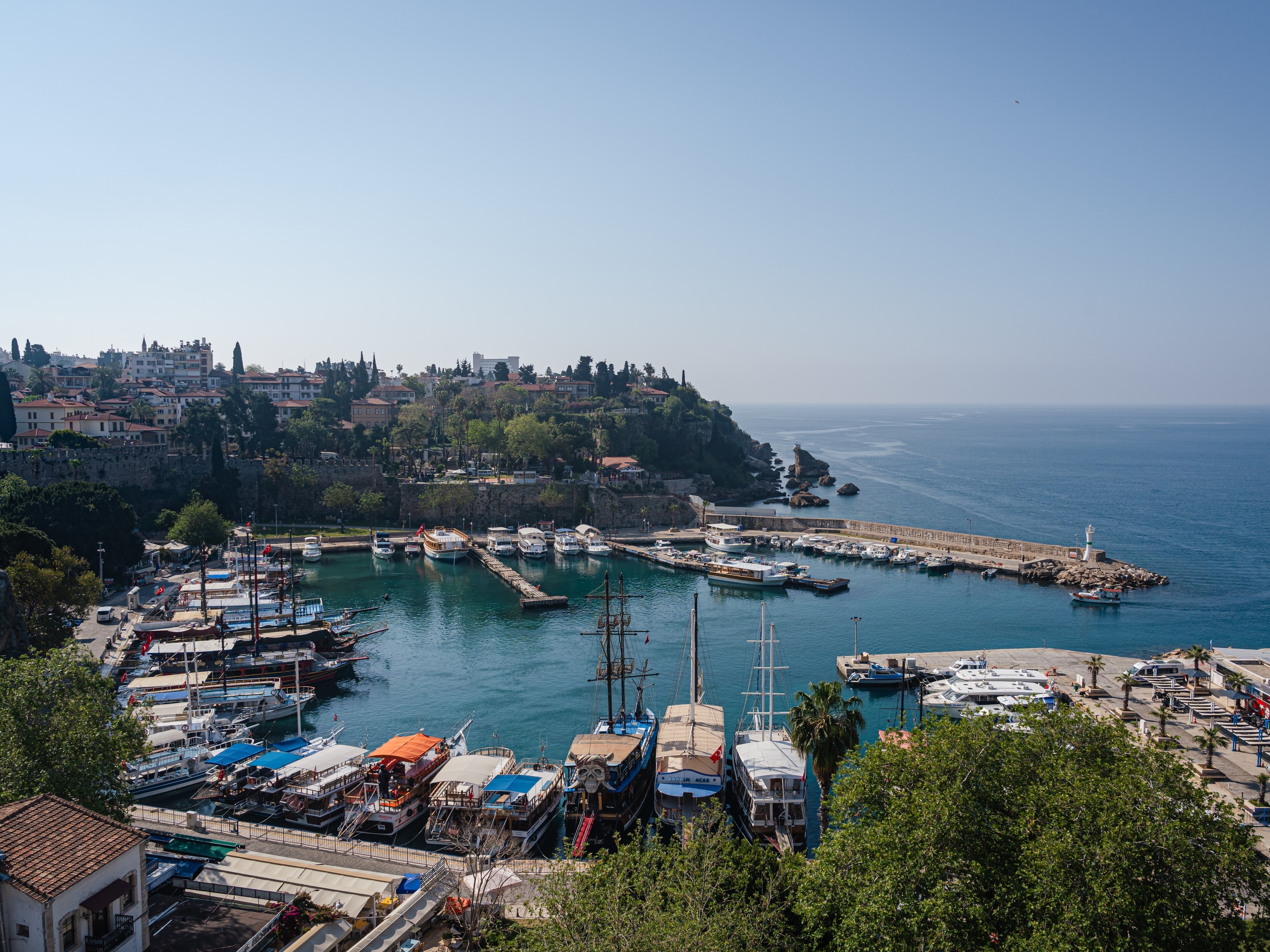
Rat-tail radishes and hooker chives: what to eat in Chiang Rai, Thailand
The time-honoured recipes of Thailand’s northernmost state draw on the natural bounty of its mountains and the ancient traditions of its indigenous peoples.
Rat-tail radish, Chinese onions, hooker chives, bitter aubergines and handfuls of prik num (mild and fruity banana chillies). After gathering these ingredients — all staples in Thailand’s mountainous north — Kay Plunkett-Hogge picks up piles of fresh herbs and brushes them against my face like a green, feathery fan. The fragrance of each is so bright they’re almost singing.
We’re in Mae Chan market in Chiang Rai province, and as she shops, Kay chats to the stallholders, leaving almost each one agog when they first hear her — a farang, or foreigner — speak in perfect Thai. “I have the face of a foreigner and the heart of a Thai,” she laughs. “As soon as I get back here, I think in Thai, and then I dream in Thai.”
Kay was born in Bangkok, in the south, but fell in love with this part of country when, aged seven, she visited with her father and tasted khao soi, the region’s heady curried noodle soup — a dish that’s crowned with a nest of crisp-fried noodles.
‘It’s a place that I love and I spend a lot of time far up in the mountains of the Golden Triangle among the coffee and tea plantations, scudding clouds and green, green forest,’ Kay writes in her book, Baan: Recipes and Stories From My Thai Home.
And now I’ve come beneath the clouds with her to learn about the regional cuisine — one that’s more rustic than elsewhere in Thailand, in part because of its remote location, terroir, cool climate, and the diversity of its population. More than 30 ethnic groups can be found in Chiang Rai — which shares borders with Laos and Myanmar (Burma) — all of which bring different cooking influences to the table.
I soon discover that there’s little coconut milk, fish sauce or sugar in dishes. Nor are things very spicy.
This is a meat-exalting part of the world — with pork being king — but one in which more than 40 indigenous herbs help to cut through the fat on the palate and in the gut.
Here, sticky rice is a staple, served in a bamboo container called a kratip khao. Kay teaches me that in Thailand, rice is more than just a side dish. “You don’t ask if you’ve had dinner yet, you ask ‘tarn khao ayang?’ — have you had rice yet?” she explains.
Growing up in Thailand, working here and then travelling to and from her London home, Kay has gathered recipes from all over the country. Up here in her beloved mountains, Kay sought out dishes from the Akha — indigenous people who crossed into the countries of the Golden Triangle [the area where Thailand, Laos and Myanmar converge at the confluence of the Ruak and Mekong Rivers] early in the 20th century. “Akha food is interesting in that it uses very little to no fat for cooking,” she says. “Most dishes are steamed or grilled or dry fried. The flavours are clean and bright, herbs and chillies enhanced with salt and smoke.”
We take the market produce we’ve bought up into the foothills of Doi Mae Salong mountain to the kitchen at Phu Chaisai Mountain Resort, where Kay has been working with the culinary team to put Akha dishes on the restaurant menu (later this year, she’ll begin teaching classes at its beautiful, airy cookery school). What soon emerges to be laid on our outdoor table is nam prik Akha, the Akha version of a ubiquitous dip made with tomatoes, chillies, shallots, coriander and salt; pla hor bai tong (fish steamed in banana leaves with herbs and spices); kua gai (chicken with chilli, lemongrass, galangal and garlic); mok hed (steamed mushrooms and acacia leaves); and moo pad hom choo (dried belly pork with hooker chives, garlic and spices).
Phu Chaisai was created by M L Sudavdee Kriangkrai, an award-winning architect and interior designer known as Mom Da. Here, the landscape has been allowed to tell its story and has dictated the whole ethos, one of authenticity rather than luxury. It’s a place to breathe. A jolly and loving soul, Mom Da takes us on a tour of her organic gardens and tea plantation, bouncing down from the back of the truck and across her fields like a nimble goat. She tells us that the region, which once cultivated poppies for heroin production, now grows some of the best coffee in the world. Later, over cocktails in her open-air bar, she introduces me to sai oua (a pork sausage with herby, spicy and salty notes) and puffy pork scratchings, served with nam prik. Nature thrums all around us and we take in views that roll right out to the border with Myanmar.
At Laab Sanam Keela restaurant, we try Lanna food, the more typical fare of the area, influenced by Yunnanese Chinese cooking. The menu is all in Thai, so Kay, a regular here when she’s in the north, does the ordering. There’s pla tabtim tod kratiem — deep-fried tilapia topped with a massive pile of crispy-fried garlic that looks almost as if it’s been tempura battered, set on pieces of deboned fish. Joining it is laab dip (laab meaning ‘lucky’ and dip meaning ‘raw’), it’s a salad of raw pork mixed with a spice and chilli blend. It’s a feature of every celebration table.
We also try naem (also known as jin som) — pork and rice sausage that’s been fermented and has a sour, funky taste. All over the table, there are piles of herbs: we pick out feathery cha-om leaves, varieties of coriander and tamarind leaves, but such is the quantity that there are some even Kay doesn’t recognise. Our guide, Mak, tells us this is a common experience, even for locals: “There’s always a leaf on the plate we just don’t know,” he says.
Further up the mountain from Phu Chaisai lives a local man who probably never has such a problem. See Mork left to become a teacher in Bangkok but returned to the wild to teach visitors about wild plants and herbs and their uses both as medicine and as culinary ingredients. After a rough assessment of our height and weight, he matches each of us up with one of his Thai ponies and, after a short time riding round a little circle in his yard, leads us out to trek in the mountains.
The sturdy little beasts are used to the inclines. But me? Not so much. There’s a lot of giggling and a little bit of fear as we trot into the wild. “I love to teach people how special it is up here,” he says. “I learned about the plants and flowers when I was 10 years old from the older people around me. In the city markets, you never know if they’re using chemicals or not, but up here there are none. We should all know more about nature and its beauty and bounty.”
Around a large, rough-hewn table in his wooden house, See Mork pours glasses of lao khao, a white moonshine made from fermented sticky rice that’s drunk with alacrity all across the north. See Mork’s brew is light, mild and sweetened with honey. With it we eat a clear broth made with chicken, carrots, potatoes, radish and coriander, all from the garden; battered aubergines; and nam prik kapi, made with fermented shrimp paste and chillies. See Mork urges us to drink more firewater — it’s good for our health, he says, and our digestion. “This one is a very special lao khao,” he says, before producing a bottle crammed with his special herbs. “Just fill it with alcohol when you get home. Let it sit a while,” he advises. “It’ll be your elixir of life — and your taste of Northern Thailand.”

A taste of Chiang Rai
The Restaurant at Phu Chaisai mountain resort
Northern Thai and Akha dishes are the highlights at the resort’s restaurant, which uses vegetables and herbs from its own garden and meat from local farms. Akha standouts include moo pad hom choo (stir-fried pork with hooker chives and chili paste). The homemade sai oua sausage is especially good. Three courses around £15 per person.
Laab Sanam Keela
Yes, it specialises in laab, but there are other fabulous dishes here too such as the deep-fried tilapia covered in battered shards of garlic. The yang ruam (mixed grill) is mostly pieces of fatty pork, including intestines and offal. Everything comes with fresh vegetables and herbs. Main course dishes from around £2.
Chivit Thamma Da Coffee House, Bistro & Bar
Located next to the Kok River, this place exudes an aura of a bygone era. It’s owned and run by yoga and meditation teacher Nattamon Holmberg, an advocate of slow, ethical food. He grows his own rice and does all the baking; all the other produce is locally sourced, including the organic Arabica coffee. The menu features international fare but there’s a great selection of Northern Thai starters, including sausage platters, pork scratchings and bowls of kow soi. A mixed platter of local Lanna delicacies costs around £10.
Five food finds in Chiang Rai
1. Nam prik num
A dip made from young chilies (prik num), roasted on the grill and pounded into a paste.
2. Sai oua
A pork sausage with herby, spicy and salty flavours that’s sometimes fried but is best when charcoal-grilled.
3. Laab khua
A ‘salad’ of stir-fried pork mixed with spices and fresh herbs.
4. Gaeng Hung Lay
A Northern Thai pork belly curry, slowly stewed with fresh herbs and spices.
5. Thua nao khaep
Fermented soya bean paste, flattened into discs and dried. Used to add depth of flavour, as well as an umami hit.
Published in the March 2020 issue of National Geographic Traveller (UK)
Find us on social media
Facebook | Instagram | Twitter







